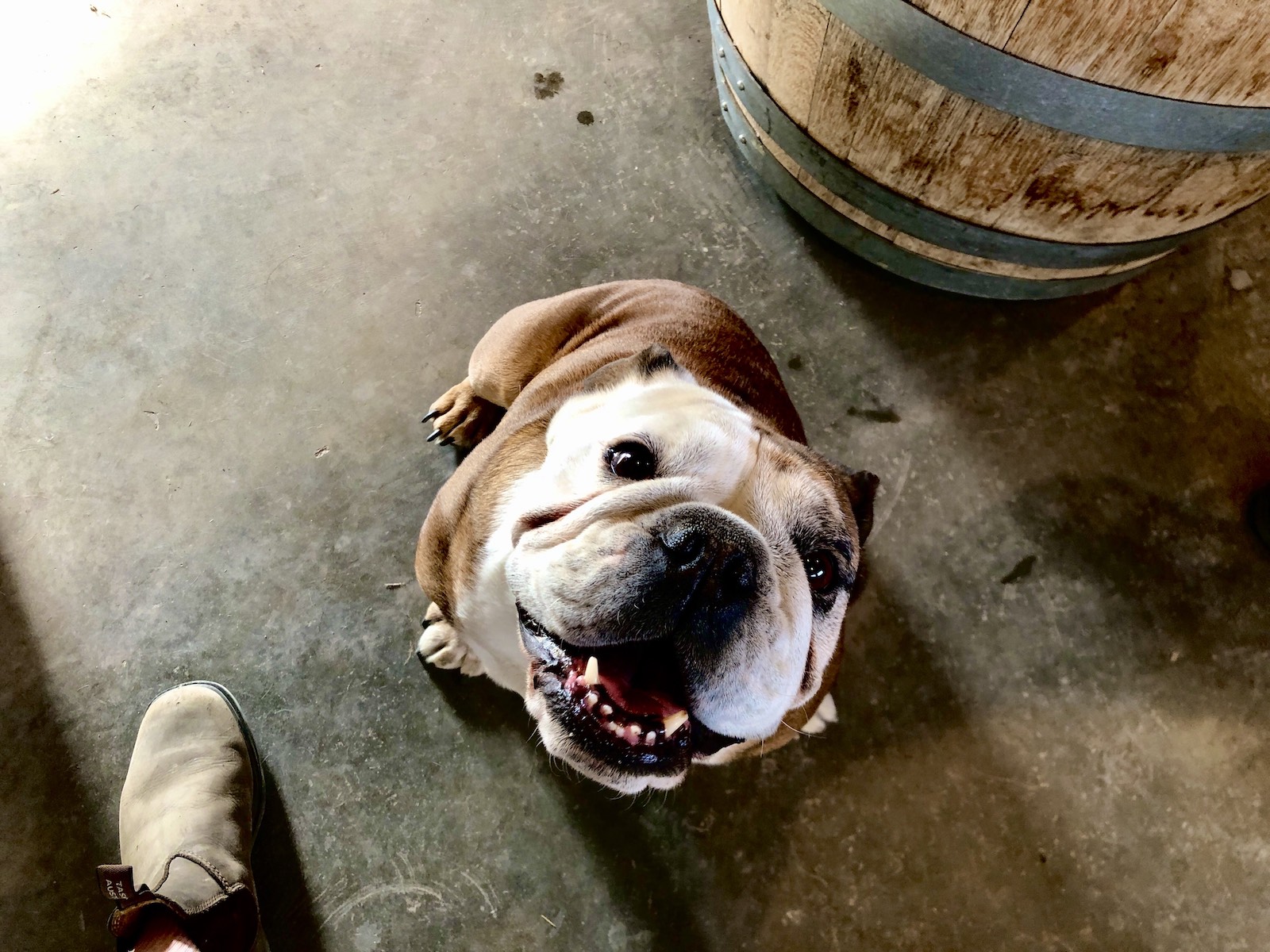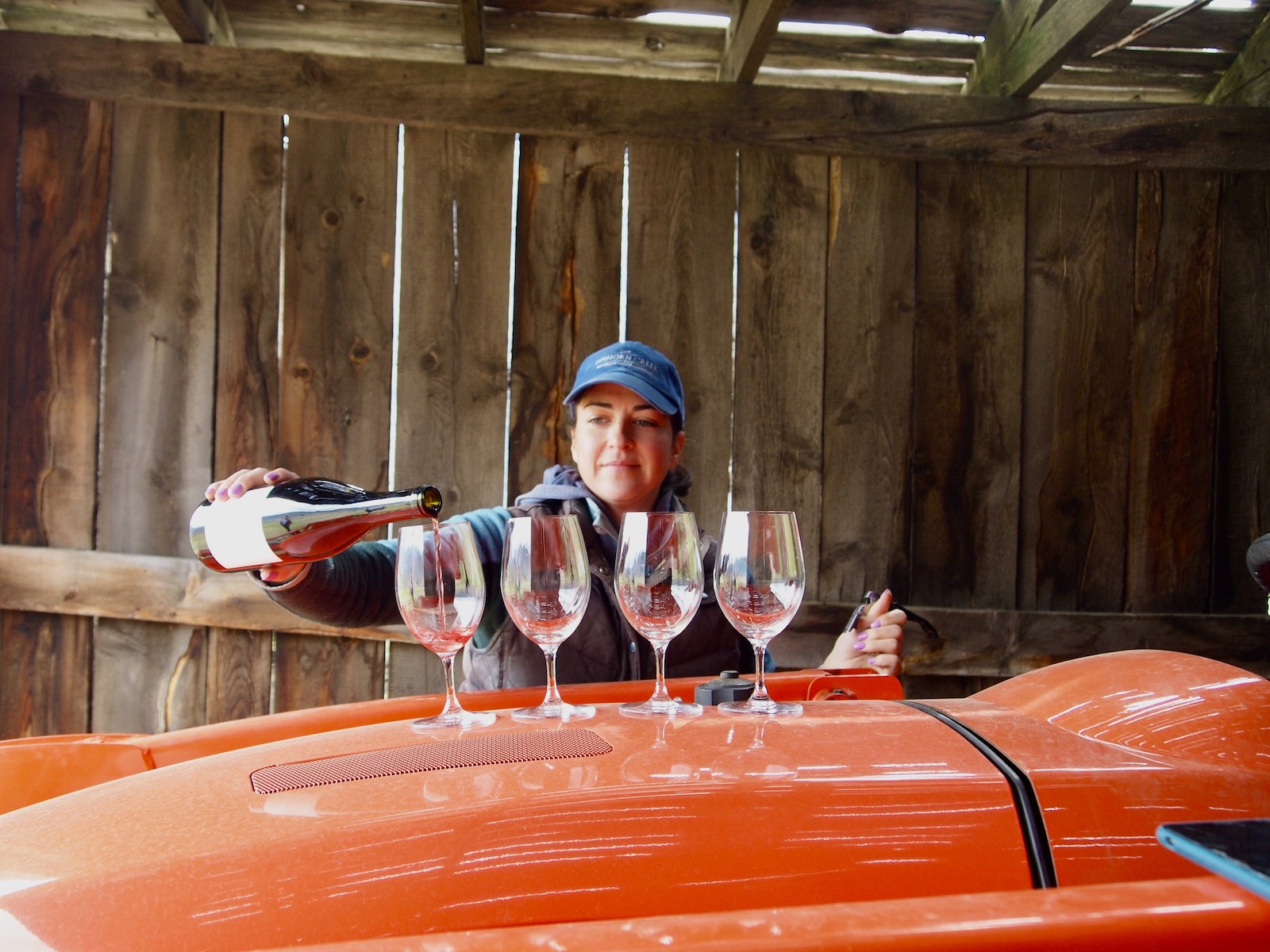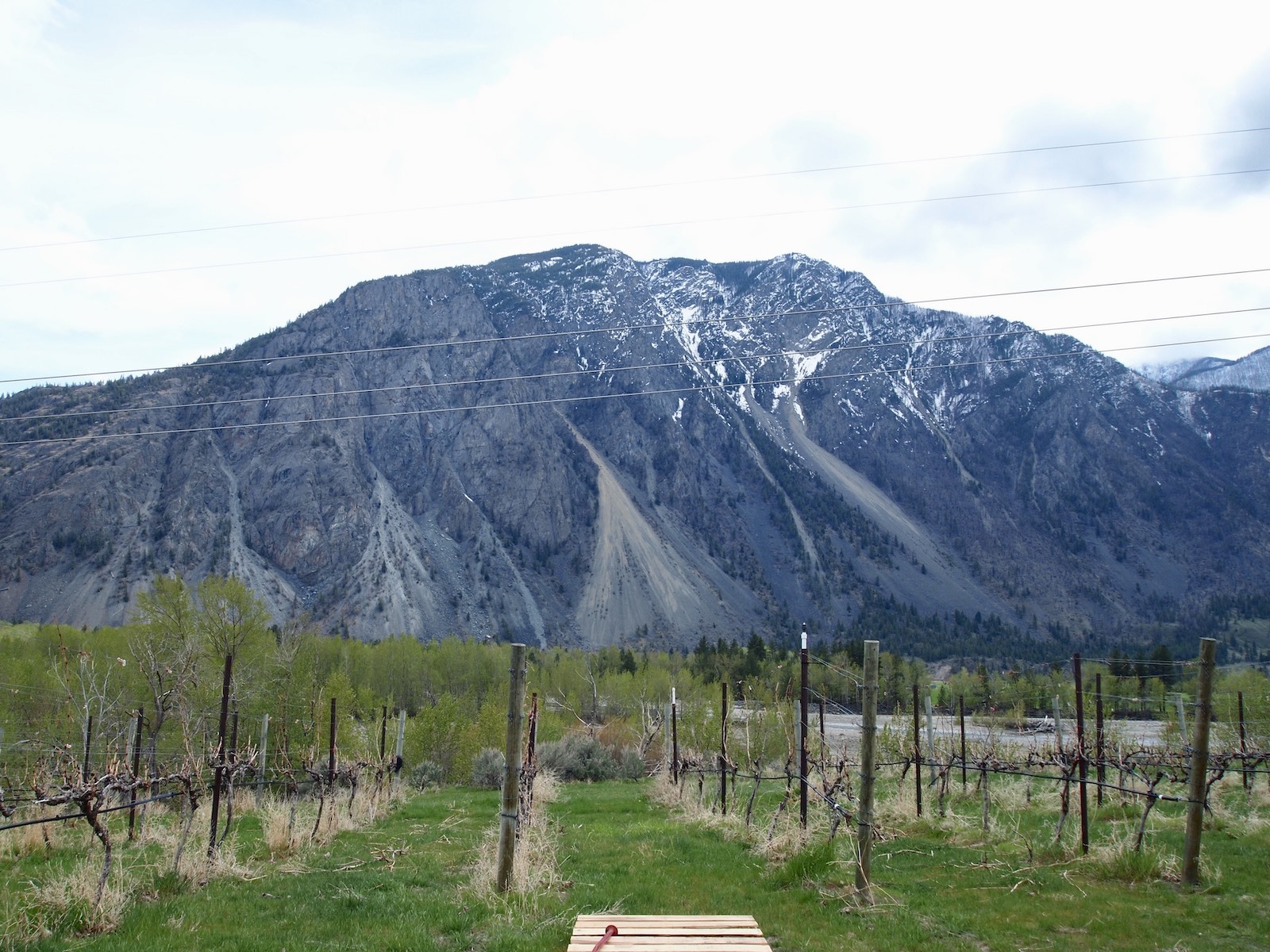On a four-acre patch of land overlooking Okanagan Lake, a man is doing crazy things. At least, that’s what his neighbours think. Jay Drysdale’s Naramata Bench vineyard has been a decade-long experiment in how to make wines differently. Bella Wines—named after Drysdale’s beloved bulldog who was, apparently, anything but beautiful—produces exclusively natural sparkling wines from B.C. grapes.
Drysdale refuses to use what he calls “the -cides”—pesticides, herbicides, fungicides—common in conventional viticulture. “It just all revolves around death,” he says. “It’s about eradicating something from the earth, which, in my perspective, makes no sense whatsoever.”

Jay Drysdale at Bella Wines.
Instead, he uses what nature already provides, spraying his vines with juiced garlic from his garden and local milk to prevent powdery mildew. An armada of chickens fertilize the soil and control bug populations. Pigs make sure nothing goes to waste. A local hawk swoops in to scare off hungry starlings. Wild herbs (he never refers to them as weeds) grow wherever they take root. He’s just turned over his locally sourced compost, which smells richly of rotting grapes.
The contrast with his neighbour’s conventionally farmed vineyard is staggering. Beneath each of his neighbour’s vines is a stripe of grey soil—“Roundup stripes,” Drysdale calls them—where nothing is allowed to grow but the grapevine. “By our government standards, that is a perfectly healthy vineyard,” he says. Beneath Drysdale’s vines grows a dense tangle of straw and wild vegetation. Tilling destroys all the microbial life that soil depends on, so he’s experimenting with crimping: manually rolling over the tall grass to break the stems and create a lattice of nutrients for new growth, similar to a forest floor.

Chickens on patrol at Bella Wines.
The skies above the neighbouring vineyard are empty. But on the Bella side of the road, a flock of starlings squawk along the power lines and wild quail run around underfoot. “That tells me I have something unique here,” Drysdale says. “They want to be here versus there.”
He doesn’t have patience for the box-ticking required to get organic or biodynamic certification and prefers the easygoing label “regenerative agriculture” to anything formal. When Drysdale started Bella in 2011, he was one of only two people in the province producing low-intervention wine. He’s part of the reason the BC VQA has adapted its standards to allow for more unusual wines that don’t fit traditional tasting profiles.
He still supplements his harvest with grapes from some conventional vineyards but is open about it. Transparency is a key part of Bella’s ethos. It was the first producer in B.C. to list ingredients and sulphite levels on labels. “I was taught to make wine like everyone else, which is safe, secure, checks all the boxes.”
Natural winemaking involves as little intervention as possible; it’s closer to how wine was made 100 years ago. Bella Wines are fermented with wild yeast and don’t have added carbon dioxide.

Buddha the dog at Bella Wines.
Drysdale wants to create “aha moments” for his customers. “I want my wines to have an energy and a life to them,” he says. “I’m trying to make wine with personality.” He does this by letting the grapes express themselves. “When you taste that, you’re tasting something that you may not ever taste that exact way again.”
He wants to understand the nuances of the grapes he grows. This is why he releases several versions of what seem to be the same wine, experimenting with what a single variety can do. To a casual drinker, they may appear identical (even the labelling is hard to differentiate), but the difference lies in the taste. A clone-787 gamay from his Mariani vineyard is crisp, clean, and dry, while the clone-509 from his estate is fleshier with a cashmere fizz. A former sommelier, he wants to make wine for sommeliers. Last year, he used individual pinot noir clones to make four barrels of ancestral-method bubbles, which he blended into a traditional-method cuvée. It’s delicious.

Rajen Toor of Ursa Major.
B.C. is still a relatively young winegrowing region that has yet to find its identity. Drysdale calls it “the wild, wild west,” as maverick winemakers push the boundaries of what’s possible. One of those new-generation mavericks is Rajen Toor, formerly head winemaker at his family’s Black Sage Bench vineyard, Desert Hills, and now forging his own path under the label Ursa Major.
Bottles of his wine sell out as soon as they hit shelves. For Toor, his success has been “surreal, absolutely surreal.” Ursa Major has rapidly become a cult brand for people who like their wine to tell a story. Each comes with its own Spotify playlist and a textured label featuring a name like Nocturne in Red (the 2018 cabernet franc) or Entropy is Comforting (the 2019 syrah). Since he first launched Ursa Major as a passion project in 2016, he has released 33 wines under the label.
Where Drysdale’s winemaking is principled, Toor’s is personal: wine runs in his blood. He grew up with the vines he was tending on his family’s estate, which is why he felt an obligation to convert them to organic farming when he got the chance. “I just really felt like the next natural evolution was to treat it like it deserves to be treated.”
Leaving his family vineyard a few months ago was a huge step for him, but one that was necessary for his personal growth and mental health. His latest release, from vines leased from his family’s property, is called Runs in the Family (a 2022 gamay that is fresh and light with a hint of herby amaro).

The new vineyard at Ursa Major.
For Toor, winemaking is an introspective art form more than a science. The ancient Panjabi culture of poetry and dancing inspired him to present each bottle as an extension of himself rather than as a product. Despite struggling with imposter syndrome, he feels winemaking forms the core of who he is. “It’s shaped everything I’ve done,” he says. “I just want to farm, make wine, sell wine, and repeat.”
Even though Toor has been making wine for most of his life, in some ways he feels like he’s just getting started. At the end of 2022, he signed the deed to a 14-acre vineyard in Keremeos Valley. It’ll be the first he owns outright, without his family. He recently learned that the vines (syrah, viognier and zinfandel) didn’t survive the bitterly cold winter, and together with his wife and business partner, Bree Toor, he’ll begin the arduous process of replanting from scratch. He says the next few years will be, “challenging and stressful but we will get creative.” Natural winemaking has taught him patience and the confidence to let things be. The wine, he says, should be left to “do its thing and present itself how it’s going to present itself.” He talks about “looking after barrels” with the same reverence as if they were children.

Tasting at Ursa Major.
Often, natural wine contains a unique visceral character that would be destroyed by intervention. “Something inexplicable changes from bottle to bottle, which you don’t get with a wine that has been stripped away,” Toor says. He’s experimenting with plums sourced from Cawston in the Okanagan. Co-fermenting the plums and grapes adds a surprising character and depth.
Ursa Major doesn’t have a tasting room. Instead, glasses balance on the front of a tractor, picking up a fine coating of desert dust and occasionally getting blown off by the wind. The wind blows constantly in the dale, acting as a natural form of pest control, ripping insects away before they have a chance to settle. When Toor presents a new wine, he wants it to “showcase the time, love, and labour of the farm without adding or taking anything away,” he says. “It’s farmed with love by me and the people who supported me.”
Drysdale says, “Wine is one of the few products in the world that can transport you back to a place in time, and if the wine is well made, that wine should be able to tell you its story. I think that’s all we’re trying to do, and then hope that that story just resonates with someone.”
Read more stories about food and drink.









